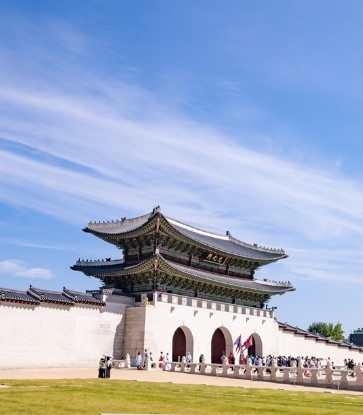Koreans may no longer wear hanbok–the traditional attire–when visiting family and relatives, and old-school folk games may have been permanently replaced with TVs and smartphones, but certain customs continue to be observed to this day. On the morning of Seol, children perform a deep formal bow of respect before the older members of the family upon which they receive gift money and words of wisdom to live by for the year. Families will sit down and tuck into an elaborate holiday spread prepared by grandmothers, mothers, aunts and cousins – a labor of love that often entails days of hovering over kitchen counters and hot stoves.
For the modern Korean family, however, the long Lunar New Year weekend is simply a welcome break from the daily grind, catching up on the much-needed rest minus all the fuss. But even so, obligatory bowls of tteokguk (rice cake soup) and festive food will grace the holiday table. It goes without saying that obscene amounts of tteokguk, mandu, jeon, japchae, galbijjim, bindaetteok and namul will have been consumed by the end of the long weekend.
Chef Park Kyung Joo at the Michelin-recommended Hamo in Seoul specializes in authentic Jinju-style cuisine, and he shares his recipe for Joseon Japchae. The origin of japchae (jap – mixed/variety, chae – finely sliced) can be traced back to the 17th century and the original version was a noodle-free dish, somewhat similar to the version below. The noodle japchae that most people know and love today only started to appear at the turn of the 20th century.

Recipe by Chef Park Kyung Joo, Hamo
Serves 2
For the mustard sauce:
1 tbsp yellow mustard powder
2 tbsp warm water
1.5 tbsp vinegar
1/2 tbsp sugar
1/2 tbsp soy sauce
1/2 – 1 tbsp crushed pine nuts
Salt to taste
Mix all the ingredients for the sauce together to make a thin vinaigrette. Feel free to adjust the amount of each ingredient to your taste. Set aside.
For the japchae:
50g of dried bracken (gosari) soaked in water overnight until plump
1 cup of bean sprouts (ends trimmed and the yellow tops removed)
1 fresh Korean red chili pepper (julienne)
1/2 onion (julienne)
6 scallions (cut into the same length as the other vegetables)
1/2 carrot (julienne)
2-3 bamboo shoots (julienne)
Spinach (use the tender baby leaves)
1/2 lotus root (thinly sliced into rounds and halved)
100g of brisket (boiled, cooled and thinly sliced – save the broth)
Optional: 80g of cheonyeop (3rd stomach of a cow, julienne)
Guk-ganjang/joseon-ganjang (soup soy sauce)
Beef broth (from boiling the brisket)
1. Blanch gosari in lightly salted water for 3-5 minutes.
2. Blanch bean sprouts in a pot with the lid open until slightly wilted.
3. Blanch sliced lotus roots in lightly salted water for 3 minutes. They should still retain their crunchy texture.
4. Blanch julienne bamboo shoots.
5. Blanch spinach.
6. Soak brisket in cold water for an hour to draw out the blood. The meat should turn almost pale. Fill a pot with enough cold water to cover the meat completely. Parboil to remove the meat of impurities. Discard water. Fill the pot again with clean cold water and boil the meat with half a spring onion for about an hour until cooked through. Remove the meat from water (but save the boiling liquid), let it cool and chill in the fridge. Once chilled completely, slice thinly across the grain.
7. Wash the sheets of cheonyeop thoroughly, using a tablespoon of wheat flour and 1 tablespoon of salt as “soap.” Rub vigorously as you would wash a dishtowel and rinse thoroughly. In a pot of water, add 2 tablespoons of soju and 1 tablespoon of Korean soybean paste to get rid of any unpleasant odor. Once cooked, remove it from the water and let it cool. Julienne.
8. Individually stir fry boiled gosari, blanched sprouts, onions, carrots, cheonyeop, blanched bamboo shoots, scallions and spinach in 1-2 tablespoons of brisket broth (in place of oil) and 1/2 teaspoon of soy sauce until the vegetables are seasoned through and the raw vegetables start to wilt.
9. Set each cooked vegetable (and cheonyeop) aside but do not mix the vegetables. Let all the components cool down.
10. Once cooled, mix all the stir fried ingredients together with the prepared mustard sauce.
11. On a plate, arrange the sliced brisket in a semi-circle and the mixed vegetables at the center. Serve.
This article is written by Yerica Park and first appeared on MICHELIN Guide Seoul. Click here to read the original story.





















